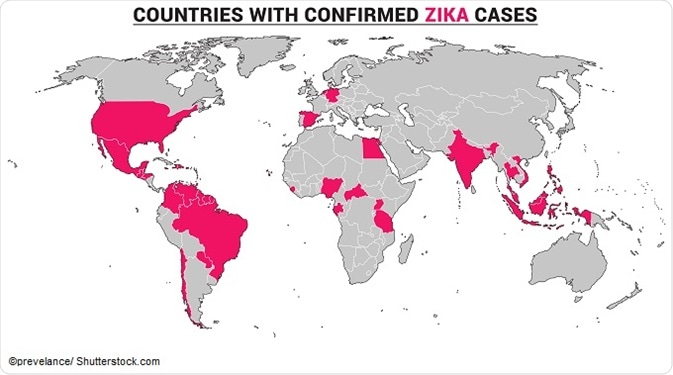Zika virus is a single-stranded RNA arbovirus of the Flaviviridae family that is related to other mosquito-borne viruses such as yellow fever, dengue and West Nile. It is considered an emerging pathogen transmitted by mosquitos of the Aedes genus, though other non-vector modes of transmission have also been suggested.
Pr. James Logan (London School of Hygiene & Trop Med): Zika workshop
Discovery of Zika virus
Zika virus was initially isolated in 1947 from a captive rhesus monkey in Zika forest near Entebbe (Uganda) while performing routine surveillance for jungle yellow fever. One year later the virus was also found in the mosquito species Aedes africanus which was caught on a tree platform in the same forest.
In 1952 the first human cases were noted by detecting neutralizing antibodies to Zika virus in sera of individuals from Uganda, but also from the United Republic of Tanzania. Two years later the virus was also successfully isolated from a young girl in Eastern Nigeria.
Still, the first proof that the Zika virus actually causes human disease (by virus isolation and reisolation) came in 1964, when a researcher in Uganda fell ill during his experiment with Zika strains from mosquitoes. He developed a mild pink rash that lasted five days and concluded that the illness was mild in nature.
From 1969 to 1983 the geographical distribution of the Zika virus expanded to equatorial Asia – including Pakistan, Malaysia, India and Indonesia. For example, in 1983 13% of human volunteers based in Lombok, Indonesia, had neutralizing antibodies to the Zika virus.
Epidemic potential
Until 2007 there were only 14 human cases of Zika virus disease documented, without any outbreaks. That changed in April and May of 2007 when Zika virus spread from Africa and Asia to cause an outbreak on Yap Island, Federated States of Micronesia. Approximately three-quarters of island residents were infected with Zika virus, without any deaths, hospitalizations or neurologic complications.
Between 2013 and 2014 the virus caused outbreaks in four other groups of Pacific islands: New Caledonia, the Cook Islands, Easter Island and French Polynesia. In one of these outbreaks, Zika virus was also found in the semen of one patient from French Polynesia, giving further support for potential sexual transmission.

Image: Countries with confirmed Zika virus cases. Data from WHO February 2016.
2015 Zika outbreak in South America
At the beginning of March 2015, Brazil notified the World Health Organization about an illness characterized by a skin rash that was appearing in northeastern states. From February to the end of April 2015, approximately 7000 such cases were identified in these states that tested negative for measles, rubella, chikungunya, parvovirus B19 and enterovirus.
In May 2015, after Brazil’s National Reference Laboratory confirmed by PCR that the Zika virus was circulating in the country, the World Health Organization issued an official epidemiological alert. By the end of October 2015, Brazil reported an unusual upsurge in the number of microcephaly cases among newborns since August.
In January 2016 first diagnoses of intrauterine Zika virus transmission were reported in two pregnant women in Brazil that had fetuses diagnosed with microcephaly (including severe brain abnormalities confirmed by ultrasound). In addition, the Zika virus was also detected in amniotic fluid.
Pan American Health Organization received reports of locally transmitted cases from Puerto Rico and 19 territories in the Americas. In February 2016 a case of sexual transmission of Zika virus was reported in the United State. Monitoring of the further spread of this virus to other countries in the region is ongoing.
Last Updated: Feb 16, 2023